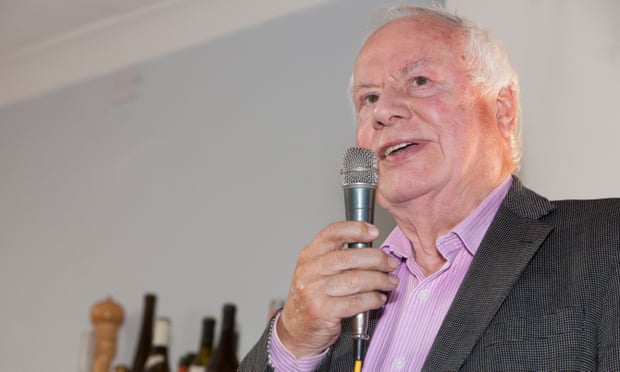by PERRY ANDERSON

Since the composition of the last issue of the journal, nlr has lost the two most gifted political writers to have ignited its pages over the years, Tom Nairn and Mike Davis. Both were magnitudes whose life and work extended far beyond this journal, requiring consideration by others on another scale. Only that portion of what they achieved which is connected with nlr, not to be exaggerated, and some of the differences between them, are in place here. Death claimed them close together. Did they touch in any other respect? Each was a mind so entirely original that, virtually by definition, it would seem they had little in common. Generation, class, nationality, formation, temperament—all set them quite radically apart. Tom was fourteen years older, born in a small Scottish village, his father headmaster of a nearby school. A natural polymath, he won a privileged education, first in an art college, then studying philosophy at two universities in Britain—Edinburgh and Oxford—thereafter spending time at the apex of higher education in Italy, the Scuola Normale in Pisa, where he acquired fluent Italian.
Returning to England in the early sixties, he earned post-graduate awards and lectured in an art college in London. There he supported the student revolt of 1968, and was dismissed for doing so. For a quarter of a century he never had a teaching job again, and for the rest of his life was always in difficult straits, often in poverty, scraping a nomadic living in places as remote from each other as Amsterdam, Washington, Prague, and finally Melbourne—where, in his seventies, he found employment for a decade in a university ten thousand miles away from where he lived in West Lothian. A Scot to whom conventional English forms of conviviality were foreign in ways that could be mistaken for shyness, he was generally quiet and reserved, and avoided publicity. He could be fierce in print, his mockery scalding; yet he was warm and gentle as a person. Italian released the high spirits in him.
In background, character and career, Mike was his antithesis. Bryan Palmer’s splendid portrait of him points up the contrast. A working-class boy who grew up in two industrial towns of Southern California, surrounded by a teenage culture of ‘drag-racing, beer-guzzling, car-stealing alienation’, radicalized by black protests and swiftly expelled from the liberal arts college in Oregon that accepted him, he became a political activist in the civil-rights movement of the sixties. Subsequently a full-time organizer for sds, he briefly joined the Communist Party, keeping himself alive driving trucks and buses. A voracious reader, steeping himself in left publications and local history, by the early seventies he was at ucla, where he graduated in 1977. After some years working with nlr in London, he published his first book, Prisoners of the American Dream, in 1986, when he was forty. Fame came with his second in 1990, City of Quartz, and with it funds; but it was another decade before he got a university job, at suny Stony Brook in Long Island in 2000. By then, however, he was in such demand that he could soon return to Southern California, with posts at uc Irvine and then Riverside. It was a cursus the reverse of Tom’s, from lower depths of redneck aliteracy to heights of canonical acclaim in his homeland. So too, in many ways his temperament was the opposite. Under stress he could be volcanic. But mostly he was genial, someone who loved talking, and who mellowed with age and security. Without animus on the left, even for those with whom he most categorically disagreed, he lacked any sectarian strain. As a person he was generous to a fault. A famously good friend, he enjoyed company and was open-handed with interviews.
Tom joined the new editorial committee of nlr at its inception, in the spring of 1962, and was from the outset the source of the ideas about Britain with which it came to be identified. He had recently arrived from Italy, where he had studied the full range of Gramsci’s political and cultural thought, as edited by the pci and produced in six volumes by Einaudi after the war. In London he started to apply it to the specificities of English society and history, and in the autumn of 1963 published an essay in Italian, ‘La nemesi borghese’, that was to form the cornerstone of nlr’s subsequent theses about Britain. When the journal was relaunched in a new format in 1964, he published successive articles on the British political elite, the English working class, Hugh Gaitskell, the nature of Labourism, and its imperialism, which remain as mordant and relevant today as they were then: a lasting contribution to an understanding of the country. This star-burst of wonderful essays continued exploding across the next decade, in further studies of the imperial cast of the Great British state and its ongoing crisis, and in new directions: the fevers of English nationalism in the imaginary of Enoch Powell, the warping of Scottish nationalism in phantasms of Calvinism, Romanticism, decolonization, and the delusions of pan-Britannic resistance to entry into Europe. Two path-breaking books emerged out of this second set of detonations: The Left against Europe? in 1972, and The Break-up of Britain in 1977—crucially expanded in 1981. In the course of this sequence, he rallied to the national cause in Scotland, and opened out his range beyond Ukania, as he would later call it, to a worldwide theory of nationalism conceived in the image of a ‘Modern Janus’—an effigy looking both backwards and forwards, to the past and to the future—which it had been Marxism’s great failure never to understand. The turning-point of the twentieth century had been 1914, rather than 1917: not class but nationality was the motor of modern history.
New Left Review for more
